In Part 1 on Tuesday, we introduced the field crew and described the efforts required just to get us to the worksite.
Down to Work
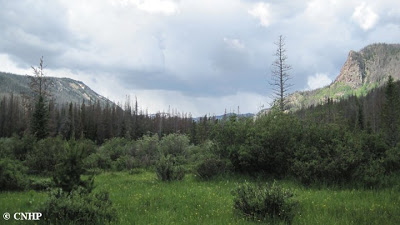
When we finally arrived at a target wetland, we took photos of a 0.5 hectare circle around the random (and virtual) GPS “point”.
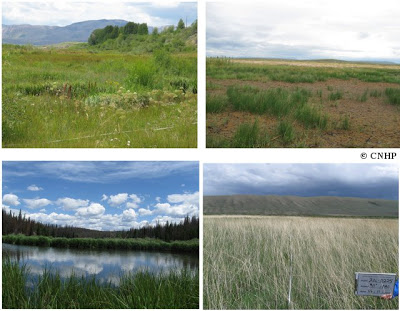
Then, we laid out a 20x50m vegetation plot to record detailed data about wetland plant species and soils. Admittedly, some of the landowners who graciously to let us survey the wetlands on their land thought it was strange to watch us play with dirt and jump-ropes (a.k.a. 100m measuring tapes).

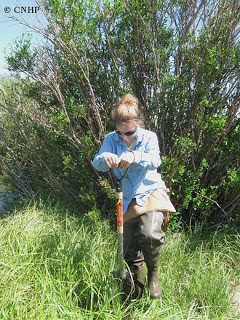
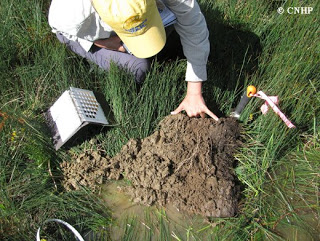
Then we assumed the proper botanist position (hunched over, hats up) and identified plants.
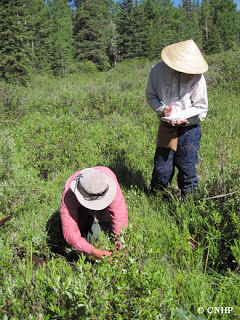
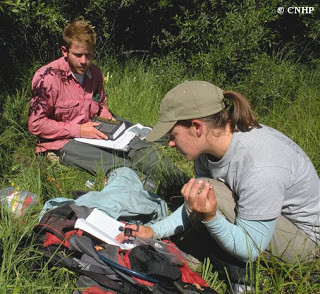
The Locals
Now, while most landowners were more than kind, we have to admit that it can be a little intimidating surveying wetlands on another person’s land. Sometimes we needed a leap of faith to go for it, like the time we passed this sign before joining a landowner for lunch. (We took the photo in case we didn’t make it back out.)

People weren’t the only denizens to mention. Wetlands are known for their fantastic wildlife habitat, and here are some common companions in the field:
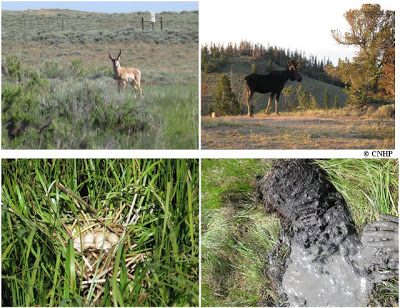
Ok, so the one on the bottome right isn’t an animal. It was the spring mud-monster that surprised us when we were least expecting it and ate our legs if we stepped down too quickly. Luckily, we usually had a teammate nearby, ready to pry us out. A sure sign of groundwater-fed habitat for the other-worldly.
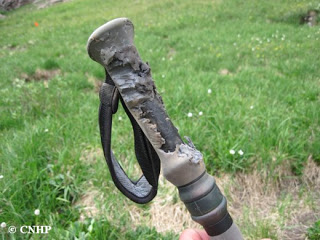
The Atmosphere
Aside from keeping the peace with wildlife and mud monsters, the largest threat to completing the day’s survey rested on the weather. And we saw a lot of it – but usually we tried to protect the camera and throw down the soil auger (a.k.a. lightening rod) by the time the earth shaking crack of thunder was directly on top of us. So here are a couple of pre- and post-storm shots. We have been told that the 2010 Colorado summer was a dry one, but that is pretty hard to believe from our vantage point.
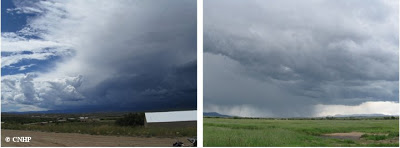


Wrapping Up
At the end of the day, we can’t say it was all work and no play. Other uses for rubber boots and waders – exceptional fly-fishing in the North Platte River Basin.
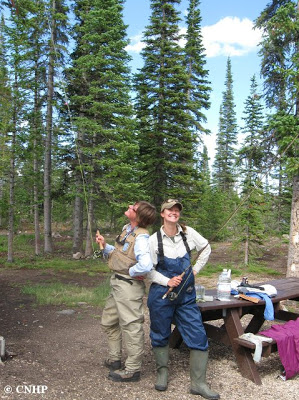
When all is said and done and despite the odds of nature, we had a fantastic summer of hard work and we got some great wetland data in the process.




